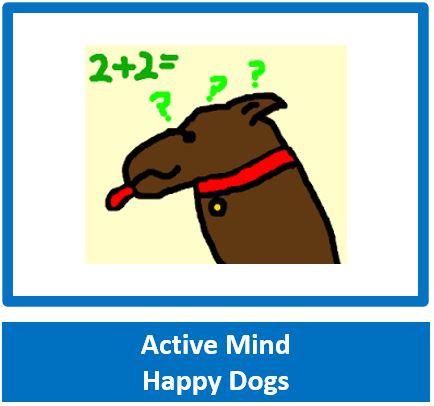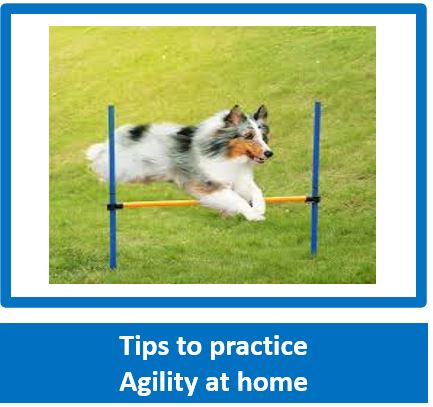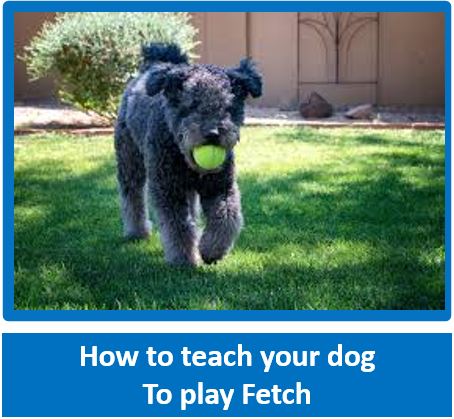A Beginners Guide to Dog Agility
https://3lostdogs.com/
(a great website with lots of varied information - enjoy!)
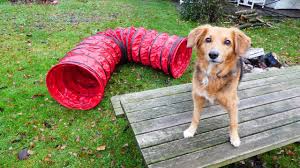
“I think if every dog owner engaged in agility training with his or her dog, the dog world would be a better place. Agility is that good, that fun, and that important.” – Sue Sternberg, dog trainer, shelter founder, author
Can’t argue with that.
got involved with the agility community when I was a teenager, and it had quite an effect on me. It turned me into a dog trainer, cured my dog’s separation anxiety, and taught me grace under pressure. I could go on, but basically, it changed my life.
Let’s see if it can change yours.
WHY AGILITY IS AWESOMEBrace yourself, ‘cause I’m about to sell you on agility like a late night infomercial (can’t guarantee rock-hard abs, though. Sorry).
If you’re looking for a way to:
- Solve behavior problems
- Exercise your dog in a way that will tire his body and mind
- Improve off-leash reliability
- Become better at all aspects of training and communicating with your dog
- Build a strong bond between you and your dog
- Gain a really cool skill to show off to the uninitiated masses
- Have a hell of a lot of fun
Agility training is all about building a common language between dog and owner. It teaches you to use body language to communicate clearly and effectively.
Another benefit of agility is that it provides the kind of exercise that actually improves a dog’s behavior. Have you ever taken your dog for a long run, only to bring him home and find that he’s actually more hyper and crazy than when you started? That’s because vigorous exercise is good for Fido’s body, but it does nothing to exercise his brain.
Here at 3 Lost Dogs, we’re all about giving dogs jobs. Boredom is the leading cause of behavior problems, because dogs were bred to WORK. All this sitting around at home with only a daily walk or run does not a happy dog make. They need some kind of challenge, or they’ll find their own. And it’ll usually be something like digging up the yard or barking incessantly at all who dare pass the front window. Agility provides the perfect combination of physical exercise and mental stimulation to keep Fido entertained and out of trouble.
But wait, there’s more!
Agility gives you something cool to do with your dog. This is important if you have a hard time getting your dog to do what you say. It teaches Fido that you are lots of fun and worth listening to. Compare this to another common activity for dogs: the dog park. At the dog park, you let him off leash and he goes off to do his own thing. Returning to you is no fun because it means he has to go home. You’re not Fido’s best buddy. You’re his chauffeur.
Bonus:
The skills you learn in agility class will make you a better dog owner or trainer overall. I still use a lot of what I learned from agility, whether I’m working on a new Frisbee stunt with Merlin, getting a hyper dog to chill out, or teaching puppies not to bite.
Okay, okay. I’m intrigued. Now what exactly IS agility?
OverviewIt’s a timed obstacle course for a team that consists of a handler and a dog. The handler directs the dog through a predetermined pattern of obstacles.
A course usually has 12-18 obstacles, like tunnels, jumps, tire jumps, weave poles, and the big “ramp” obstacles collectively known as the contacts.
In a trial (aka competition or show), the dog runs the course off-leash and the handler can’t touch the dog. The human half of the team relies on body language and, to a lesser extent, vocal cues, to tell the canine half where to go.
Origins
Agility first appeared in England in 1978, as essentially a half time show at Crufts. The creators based the demonstration on horse jumping competitions, intending to show off the dogs’ natural speed and agility. Dog owners and trainers looking for something new to do with their pets pricked up their ears and said, “Hey, MY dog could do that.” Thus the sport was born.
OrganizationsThere is an ever-growing list of agility sanctioning organizations. The ones you’ll hear about most often in the US are NADAC, AKC, and the USDAA (see below for a more complete list of national and international groups). Each organization has its own rules and style. For example, NADAC courses are spread out and focus on speed. They often challenge the handler to send their dog through the course at a distance. USDAA courses are “tighter” and more technically challenging.
Note FOTD - in SA you can also find clubs and individuals - just Google
What if I’m too young/too old/too out of shape?Ain’t no such thing in agility. This sport is open to people of all ages and athletic ability. I’ve taken classes where some of my fellow students were elementary school kids, and others were retirees. At any given trial you’ll find junior handlers, veteran handlers, and everything in between.
As far as fitness and physical ability goes, again, agility is open to all comers. In competitions, I’ve seen everything from people in motorized scooters to Olympic gold medalists. Being in shape is definitely a plus, but it’s not a requirement. Of course, agility can come with the added bonus of getting you in shape.
My dog is a *insert breed or breed mix here*. Can she play?Herding breeds like border collies are the masters of this game, which is why you’ll see a ton of them at trials, but they’re not the only players. Chihuahuas, pit bulls, huskies, hounds, even Great Danes. You name it, my dogs and I have probably been shown up by it at some point. Surprisingly, certain toy breeds like Papillons have a real knack for agility.
Most sanctioning organizations allow mixed breeds to compete. Even the American Kennel Club, for many the very symbol of purebred snobbery, has opened up some agility trials to the mutts.
I’m not sure if I have the time or money for this.W01 one-hour class per week, about six months out of the year
- Herein lies the rub. One of the drawbacks to training competitively is the cost. Between class fees and trial entries, this can be an expensive sport. That doesn’t have to deter you, though. Many clubs offer significant discounts on training and entries if you work at their trials, which was a huge help for me. I earned quite a few free or nearly free classes by working trials.
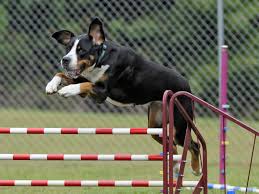 This is a pic of a dog doing agility in the home environment and you can see the joy on its face - the majority of dogs really love agility
This is a pic of a dog doing agility in the home environment and you can see the joy on its face - the majority of dogs really love agility
THE GAME IN A NUTSHELL
Agility trials are usually weekend-long events put on by local clubs, who play by the rules of their preferred organization. Each trial consists of a few different courses, or runs.
Step one of each run is the walkthrough.
If you’ve ever been to an agility trial and seen a group of people walking around in the ring with one arm out and muttering commands to an invisible dog, you’ve just witnessed the walkthrough portion of the trial. These people may look three fries short of a Happy Meal, but they’re actually hard at work memorizing the course and plotting out how they will run it.
Once the walkthrough is over, the judge and ring crew take their positions. The first team is called to the starting line. The handler puts the dog into position, says go, and they’re off! The team runs the course as fast as they can while avoiding racking up any faults.
Each organization has their own rules about faults, but the ones you’ll find in most rulebooks are:
Going it Alone or Joining a Club or going to see Trials
You can see if their are any trails or competitions that you can go and have a look at. This are normally fun and are casual and relaxed, plus shows you what you and your dog can aspire too!If you don’t plan on competing (that’s what they all say… mwahahaha!), making some of your own equipment and training your dog on your own can be a lot of fun.
Important: Avoid letting your puppy or teenage dog jump over any obstacles. At this age, a dog’s bones are not fully developed. Jumping can seriously damage joints. For small dogs, joint maturity is at about one year old. For larger dogs, 18 months to two years. Check with your vet before you start agility training.
Agility trials are usually weekend-long events put on by local clubs, who play by the rules of their preferred organization. Each trial consists of a few different courses, or runs.
Step one of each run is the walkthrough.
If you’ve ever been to an agility trial and seen a group of people walking around in the ring with one arm out and muttering commands to an invisible dog, you’ve just witnessed the walkthrough portion of the trial. These people may look three fries short of a Happy Meal, but they’re actually hard at work memorizing the course and plotting out how they will run it.
Once the walkthrough is over, the judge and ring crew take their positions. The first team is called to the starting line. The handler puts the dog into position, says go, and they’re off! The team runs the course as fast as they can while avoiding racking up any faults.
Each organization has their own rules about faults, but the ones you’ll find in most rulebooks are:
- Knocking down jump bars
- The dog failing to place at least one paw in the contact zone on the down ramp of the contact obstacles
- The dog failing to complete the next obstacle (this is called a runout or refusal)
- Taking the wrong obstacle
- Going over the time limit
Going it Alone or Joining a Club or going to see Trials
You can see if their are any trails or competitions that you can go and have a look at. This are normally fun and are casual and relaxed, plus shows you what you and your dog can aspire too!If you don’t plan on competing (that’s what they all say… mwahahaha!), making some of your own equipment and training your dog on your own can be a lot of fun.
Important: Avoid letting your puppy or teenage dog jump over any obstacles. At this age, a dog’s bones are not fully developed. Jumping can seriously damage joints. For small dogs, joint maturity is at about one year old. For larger dogs, 18 months to two years. Check with your vet before you start agility training.




